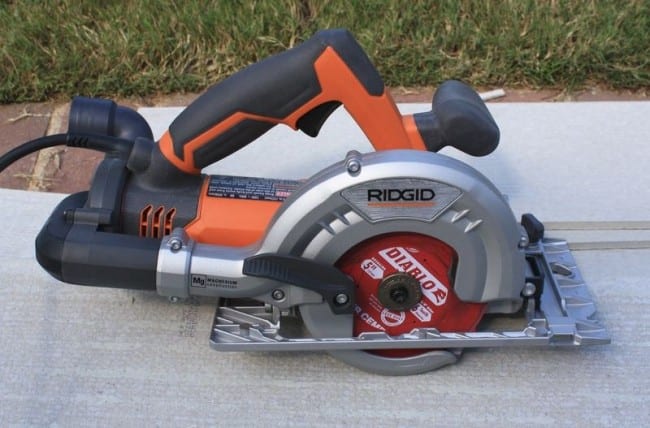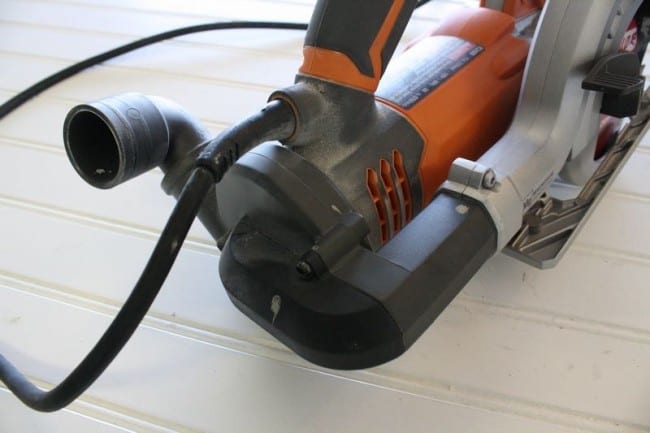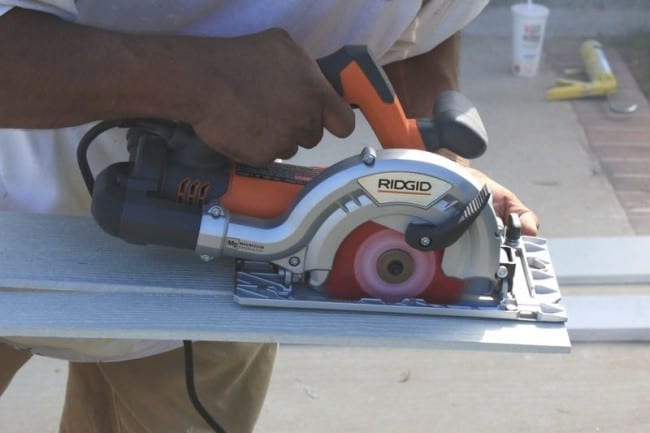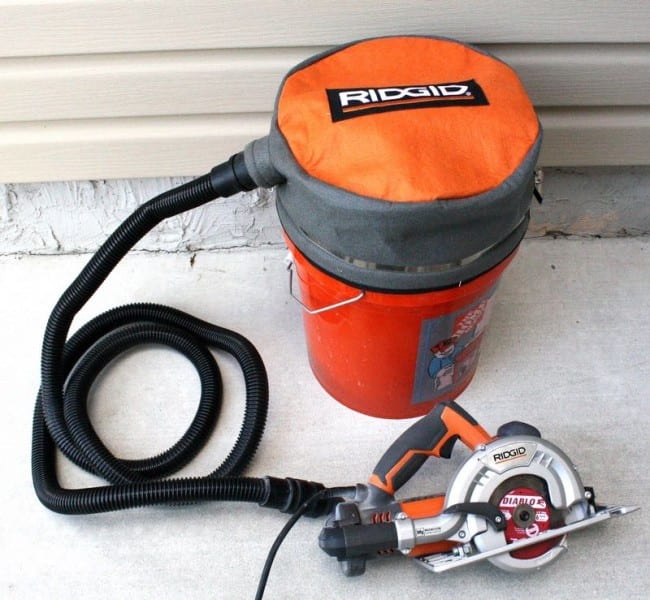Since the invention of cement fiber siding, there has yet to be a perfect cutting solution. We have seen everything from powered shears to different saw blades; and while all seem to come close, none completely satisfy. The Ridgid R3400 Fuego 5” Fiber Cement Saw is yet another contender to solve the dilemma of cutting these hard materials. This saw is supposed to be able to be used out of the box for cutting the following (or similar type) products: HardiePlank, HardieBacker, Fiberock & DuRock.
Ridgid R3400 Fiber Cement Saw Features
Our test saw arrived in full retail packaging with the outer cardboard box nicely decorated and listed out all the benefits and features of the tool. Inside the box, they packed in the R3400 Fiber Cement Saw with a blade wrench, a 5 in. Diablo fiber cement blade, 8 ft. hose, bucket filter, bucket clamp and the operator’s manual. One thing that we did note is while the blade that came with the saw is great, we have had a hard time finding replacement blades in stock at the local stores. While the blades are available online, this may not be the most convenient may to buy them because most times it is one of those types of things you just need to buy on the fly – especially when you need to finish out a project.
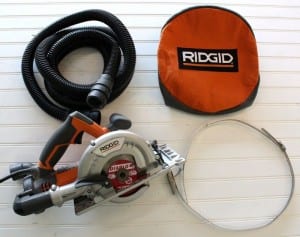
Testing the Ridgid R3400 Fiber Cement Saw
To start our testing of the saw, we installed the included 5 in. Diablo fiber cement blade. This blade has carbide teeth like other saw blades, but since it is designed to cut the concrete board siding, it only has six teeth. Go figure. In a world of “more is better”, we would think that more teeth would cut faster or better, but we soon learned that the opposite was true when it came to this stuff. The install was quick and easy with the use of the built-in spindle lock and the included wrench for the arbor bolt. For our particular test we had about 100 cuts to make through 7-1/4” HardiePlank siding. Of course the first thing we did was put on some safety glasses and a dust mask because, from our experience, anything that spins and is supposed to cut anything related to concrete, creates mountains of fine dust.
Our initial cuts were made without the use of the included dust collection system which is comprised of the 8ft flexible hose, a breathable dust filter and a 5 gallon bucket that we provided. The cuts were dusty but this was due to us not connecting the hose. The AirGuard Technology Dust Collecting System was very effective in sucking up and collecting the particles and dust from the cut. We quickly learned that we needed to connect the hose up to the saw. Once everything was properly configured, it was very effective in reducing the dust in our work than any of our other methods of cutting the HardiePlank.
One of the interesting things we quickly picked up on was that there is no blade depth adjustment. While this is not so much an issue for most cuts, we did find it made doing long rip cuts a little more tricky because we had to be more careful of where the blade was cutting beyond our material.
Conclusion
This is definitely a cool tool! We liked it because it is unique and serves a pretty specific purpose while doing a pretty good job at it. The dust collection worked surprising well, but we did find that when the hose was connected up to the bucket, it made the system a little more cumbersome. For our performance rating we gave this saw a 6/10. This number could easily be improved if the sight lines of the saw were improved and a blade depth adjustment mechanism could be added. Visibility was a little limited when you were trying to make nice precise cuts. The other thing that we noticed was that we could not easily find replacement blades for the saw. For our value rating we gave the saw a 7/10 since it does a pretty good job of cutting and it comes with everything you need to get started. There is simply no need to buy any additional accessories or parts.


